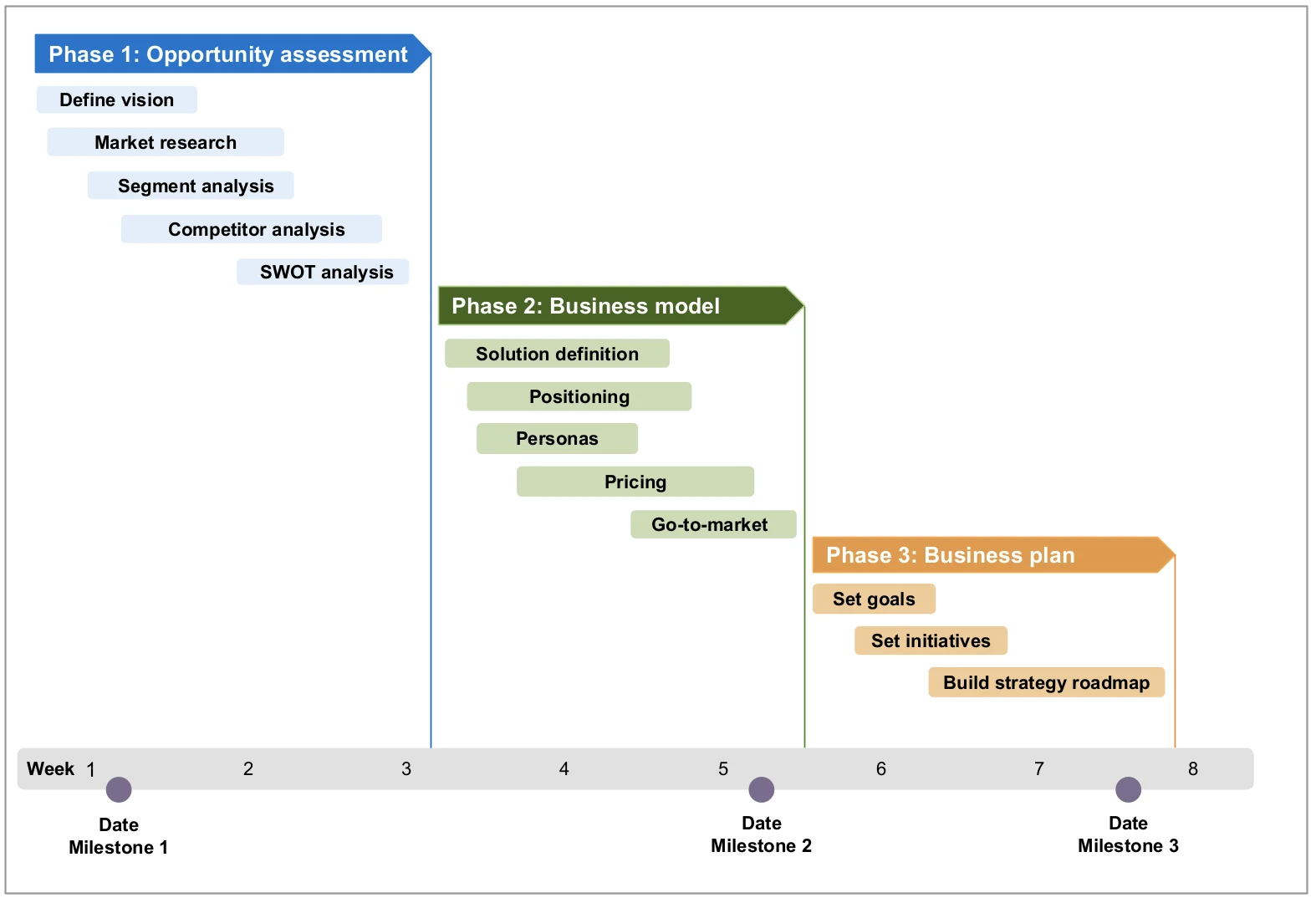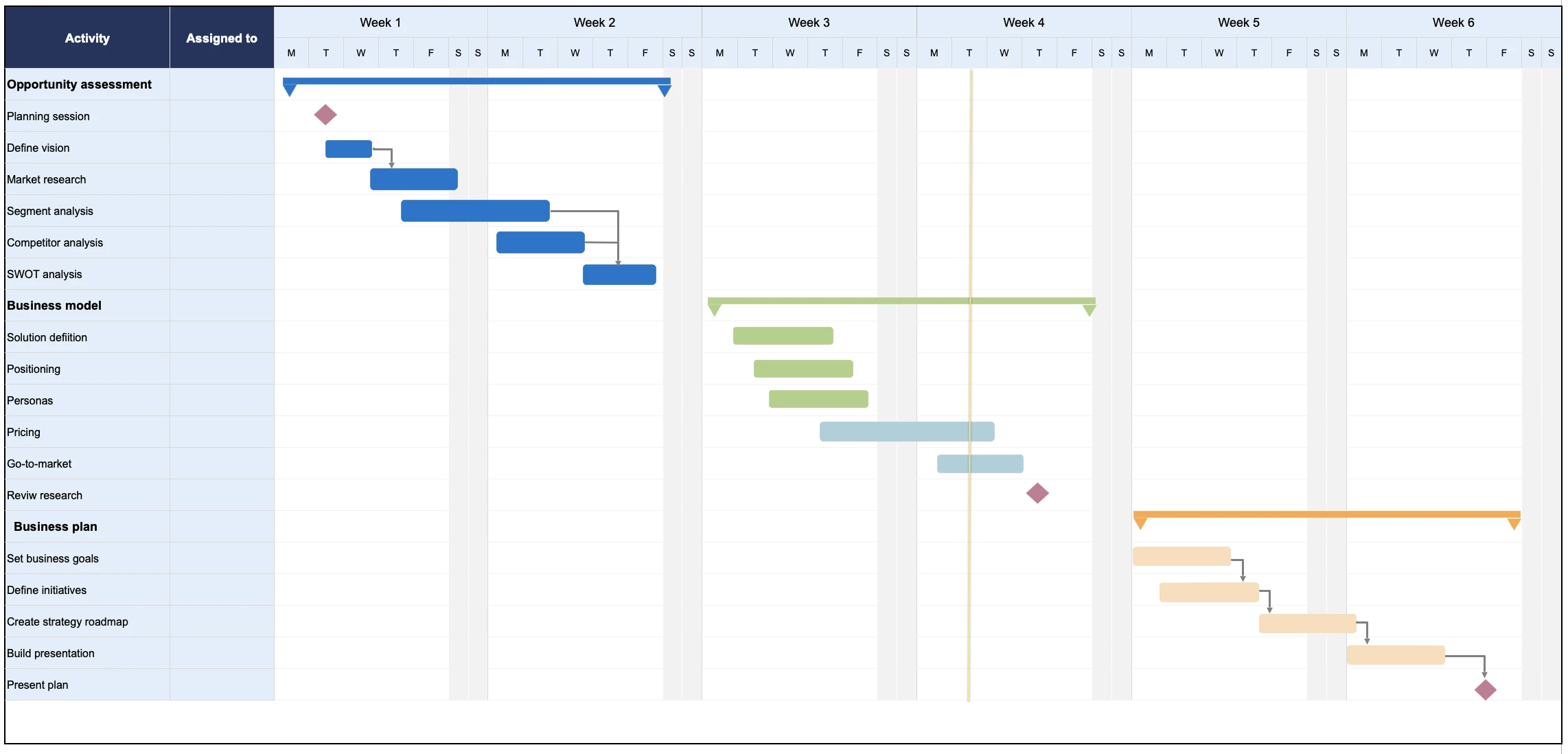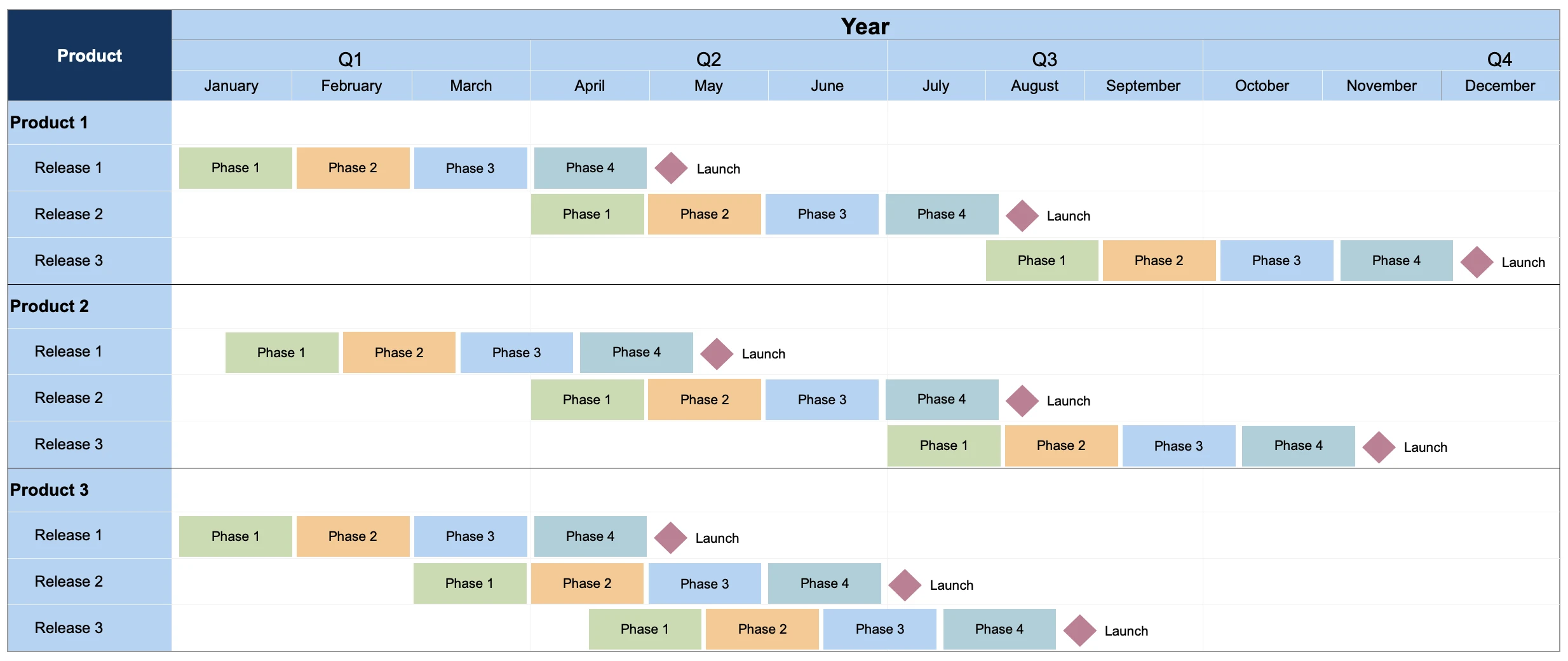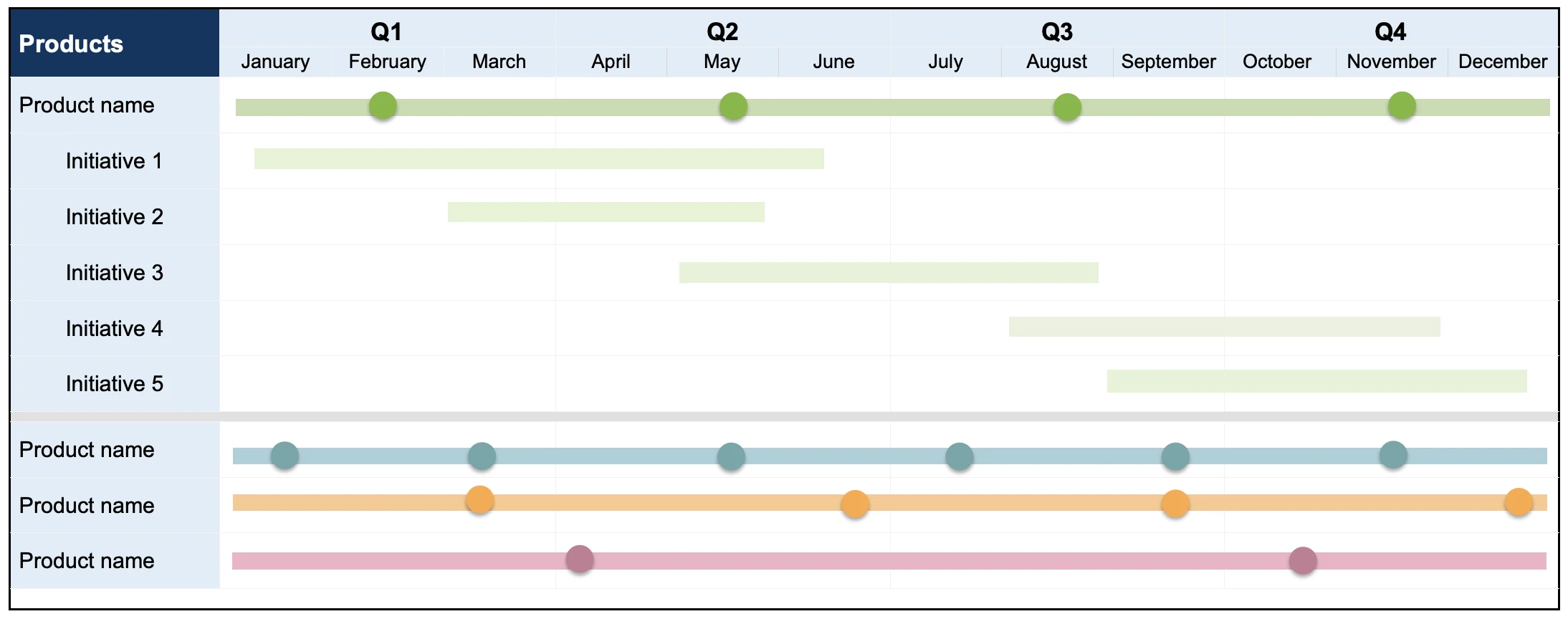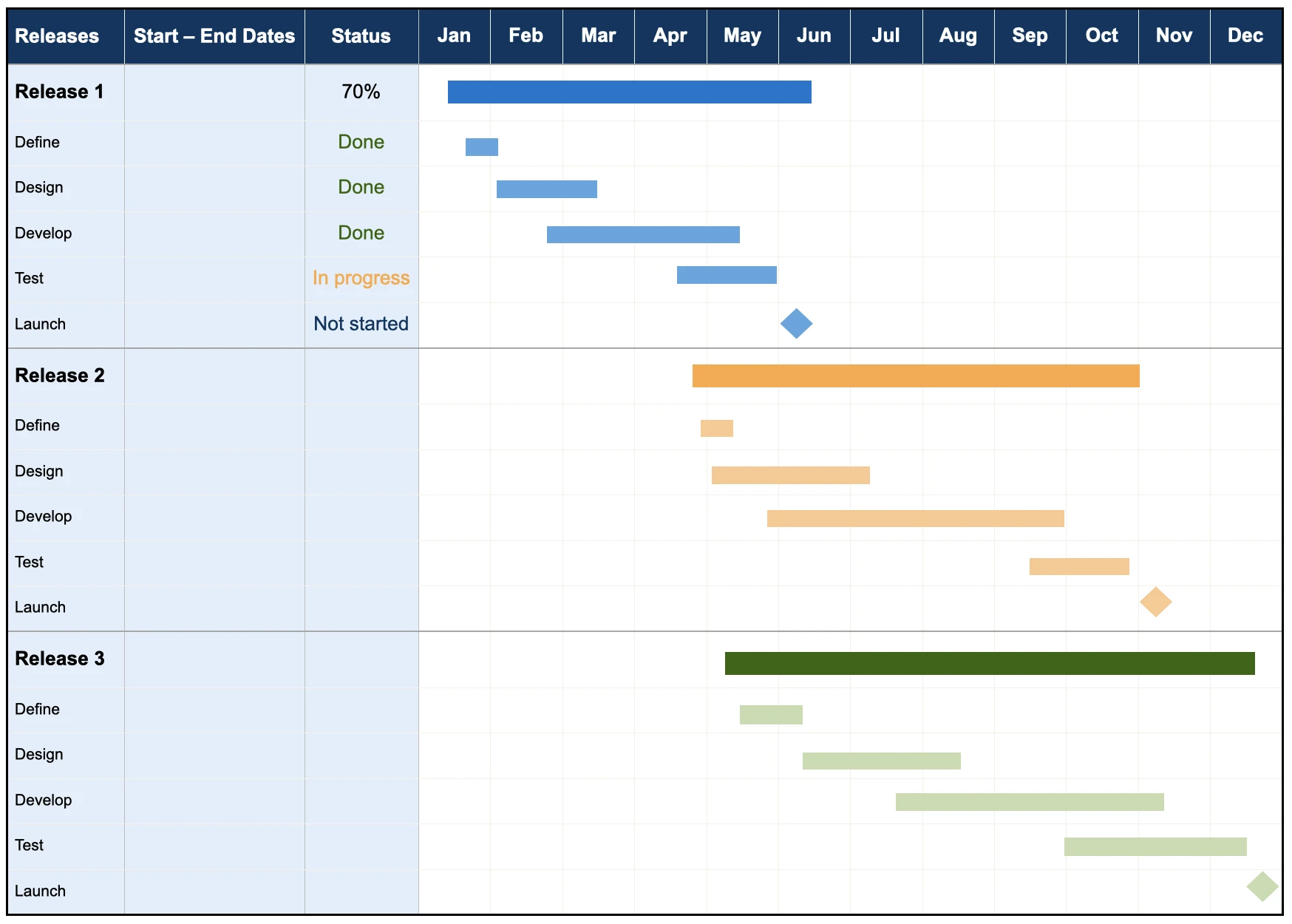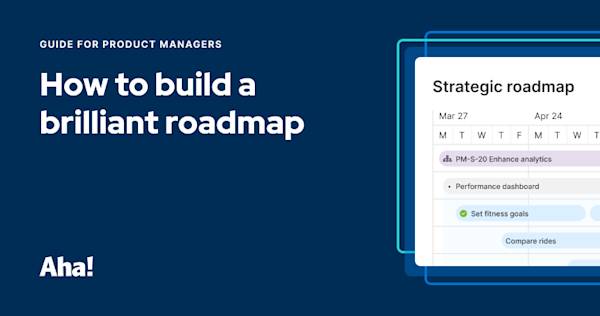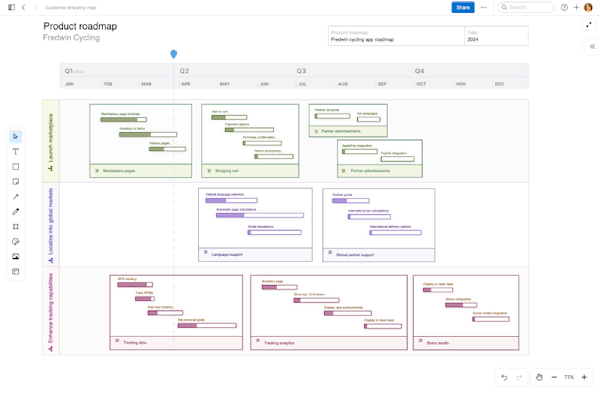10 Gantt chart templates for product teams
Last updated: April 2024
A Gantt chart is a visual project management tool that displays tasks along a timeline — showing the start and end dates, duration, and dependencies of each task within a project or product plan. You can use Gantt charts in a variety of ways — to capture a strategic business plan, manage product releases, or visualize project tasks, to name a few examples. Gantt charts are particularly useful for product development teams focused on planning, sharing, building, and launching new products and functionality.
With Aha! Roadmaps, you can build collaborative, cloud-based Gantt charts in minutes. Visualize dependencies, collaborate with others, and make edits in real time — all in a single tool. If you are not yet ready to do that, you can get started with the Excel and PowerPoint Gantt chart templates included in this guide.
Jump ahead to any section:
Build a Gantt chart in Aha! Roadmaps — start a free trial.
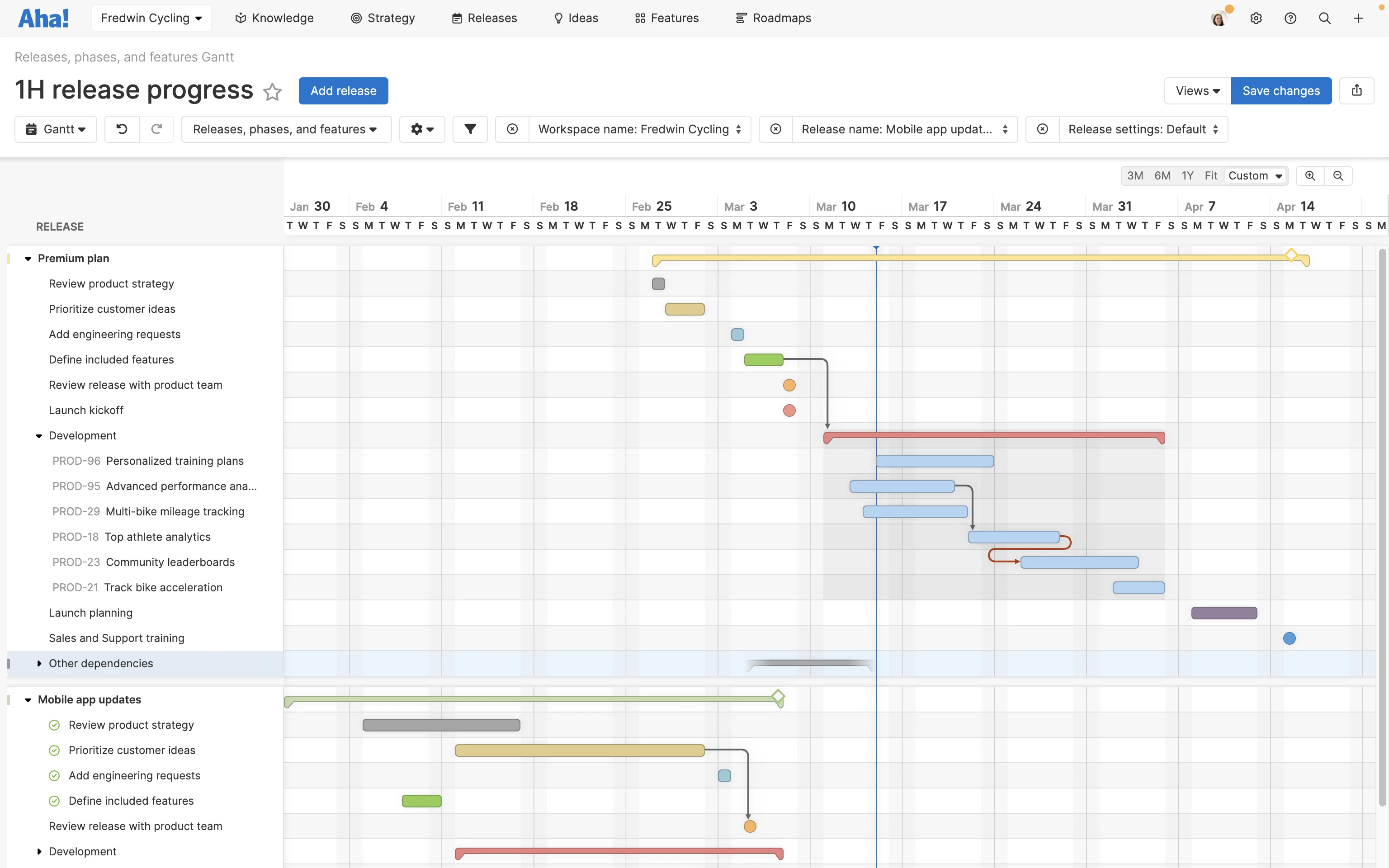
Explore Gantt chart templates
Gantt chart Excel templates or cloud-based Gantt charts make it easy to get started. To create a Gantt chart in Excel or PowerPoint, download any of the chart templates below. There are Gantt chart templates available for strategic planning, portfolio planning, product management, release planning, and project management. Once you download your template, you can begin customizing your Gantt chart.
Jump ahead to the different templates here:
Static slides and spreadsheets are simple to create but can become cumbersome to update over time. If you are interested in exploring what you can do with dynamic Gantt charts and product roadmaps, join an Aha! demo.
Strategic planning Gantt chart templates
Overview
Perhaps you are refreshing your product vision, launching a new business, or entering a new market. Strategic planning templates are perfect for capturing the essential activities required to build a winning business or strategic product plan.
Use case
The PowerPoint template below uses a weekly timeline to visualize the important phases and tasks in your strategic planning process. You can also include significant milestones, such as a kickoff session or stakeholder presentation.
Use case
The next Gantt chart template allows you to build a more detailed implementation plan. It lets you assign strategic planning tasks, visualize dependencies, and shade the bars to show when tasks are completed.
Portfolio planning Gantt chart templates
Overview
If you are a product manager overseeing a portfolio of products, you will need to show a summary-level timeline of releases across all products. These Gantt chart templates are ideal for portfolio planning and showing executives how your portfolio strategy aligns in a single view.
You can use these particular Gantt charts, for example, during annual and quarterly planning reviews to help everyone understand the release schedule for the upcoming year, the duration of each release, and when each will be delivered.
Use case
The Excel template below communicates the release schedule for multiple products for an entire year. It also shows the duration of each phase of the release. This helps with high-level resource planning and allows teams to coordinate implementation plans.
Use case
This next template allows you to visualize the release timeline for multiple products. It is useful when you want to use a Gantt chart with dependencies between releases. Expand each section to see the duration of each release.
Product planning Gantt chart templates
Overview
The templates in this section show your product development plans for the entire year. They allow you to capture the time frame for each release and include important details for each phase, such as the start and end dates, assigned team, and status. They are great for coordinating delivery and new product development planning with other teams.
Use case
This Excel template is perfect for capturing your annual release plan in one view. You can change the color of the bars to visualize which team is responsible for each phase.
Use case
The next template provides a dashboard-style approach to help you communicate the status of each release. As the year progresses, update the template and include it in status reports to show how you are doing against your plan.
Release planning Gantt chart templates
Overview
Release planning Gantt charts are great tools for product managers. In fact, release planning is one of the most common use cases for Gantt charts in product development. Gantt charts show all the phases of work required from all teams involved to meet a release deadline — serving as a more detailed companion to the product roadmap, which typically displays the general timeline for multiple releases.
Use case
The template below is a Gantt-style view on a whiteboard in Aha! software. It helps you quickly show the "what" and "when" of your release plans — so everyone on the team understands exactly what is needed to deliver on schedule. Any element on a whiteboard can be converted into real work in Aha! Roadmaps so you do not lose any momentum.
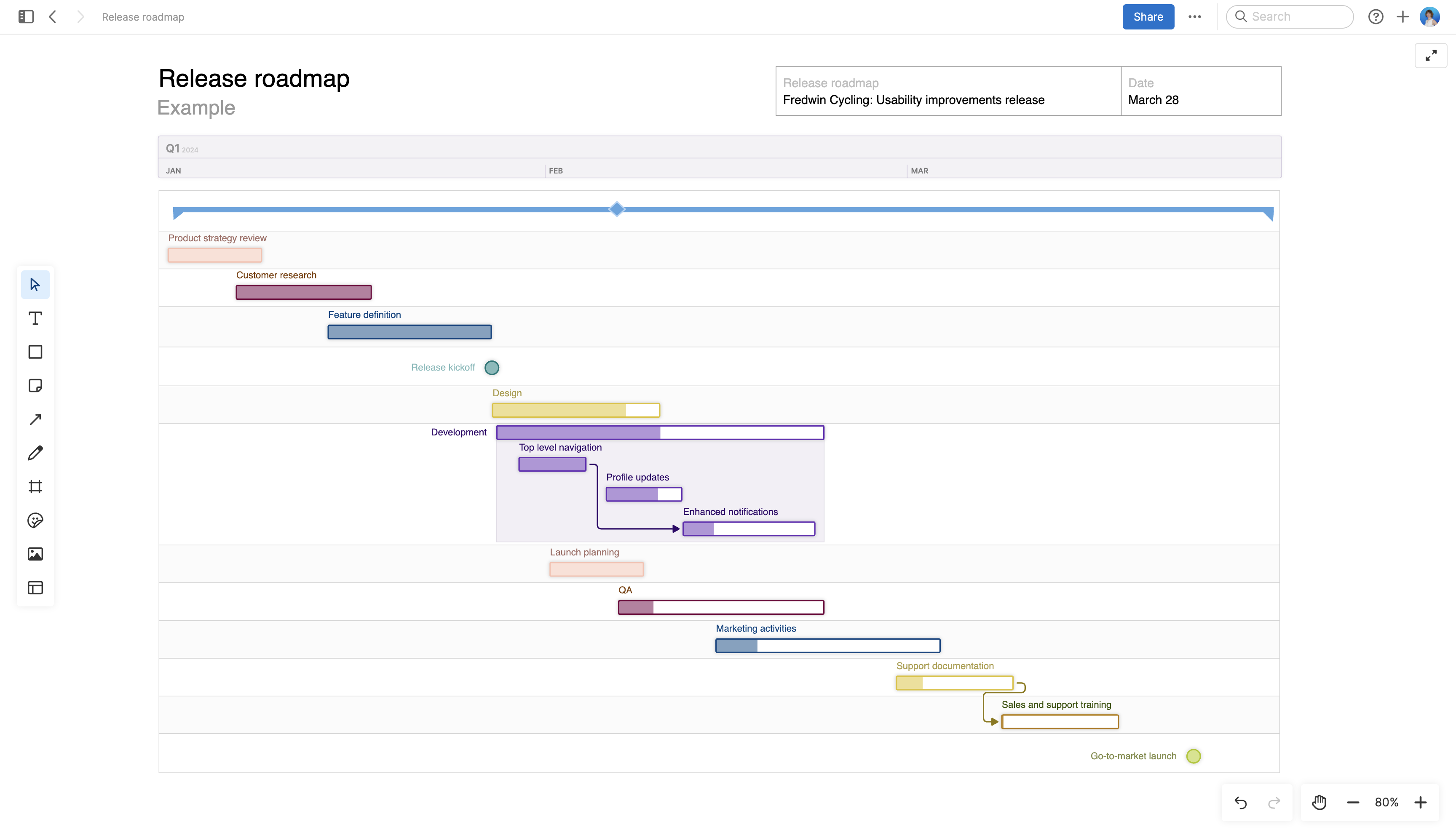
Use case
The next Gantt chart shows key activities that make up an overall release plan. You can track the status of each task by changing the color of the bar and show dependencies between tasks.
Use case
This next release template is perfect for agile product managers and agile development teams. It allows you to visualize your sprint schedule and show the user stories that will be completed in each sprint. You can also include milestones, such as sprint planning and review meetings.
Project management Gantt chart templates
Overview
Gantt charts can also be used to manage a wide variety of project management tasks. Project managers can use them, for example, to plan a user research effort, trial onboarding project, or customer advisory board. They make it simple to keep track of all the task lists that need to be completed. Choose from a variety of timelines to reflect your project planning horizon.
Use case
This project management Gantt chart template uses a weekly timeline to track important tasks that need to be completed. You can also break tasks into sub-tasks and show the order they need to be completed in.
Use case
This Gantt chart template provides a simple way to track the task list that needs to be completed each week. You can shade each bar to represent the percent completed.
Related:
Do you need a Gantt chart template?
The success of any new product development process relies on a clear plan that everyone can rally behind. This is why business leaders, product managers, and project managers commonly use Gantt calendars and diagrams — to give cross-functional teams an overview of upcoming work and align everyone around the timing of the plan.
Gantt charts are also useful for planning any type of time-driven or collaborative effort. Consider using a Gantt chart if you are:
A business leader defining a company strategy, refreshing a business plan, or planning to enter a new market.
A product manager planning product releases and features.
A product marketer coordinating cross-functional plans to launch a new product or release new functionality to market.
A project manager working with development teams to deliver product requirements on a set schedule
Some teams that follow agile software methodology view Gantt charts as a relic of waterfall. This is why many agile teams use roadmaps instead of Gantts to visualize and communicate upcoming plans. But it is important to understand that both roadmaps and Gantt charts can actually be valuable (and even complementary) tools. Use a roadmap to capture the high-level strategy and a Gantt chart to show a more detailed view of the work — the phases, tasks, and milestones that the product and engineering teams must complete to achieve that strategy.
Related:
Common pitfalls when creating Gantt charts
Gantt charts are powerful tools. But they lose their potency as soon as they become inaccurate, outdated, or overly complicated. In order to create the most effective Gantt charts, you need to feel confident about your approach to building, using, and maintaining your own Gantt sheets.
Here are some best practices to keep in mind:
Keep your Gantt chart up-to-date. Since Gantt charts are based on schedules and timelines, they are only useful if they convey accurate dates.
Keep your Gantt chart simple. Gantt charts can quickly become too complex — especially if you are managing multiple products or projects in one sheet without advanced filtering options.
Keep your Gantt chart flexible. Choose a Gantt chart template or tool that is simple to modify. When plans or dates change, you need to be able to adjust your Gantt chart quickly and easily.
Gantt chart software for major cross-functional efforts
If you are new to using Gantt charts, the free Gantt chart Excel and PowerPoint templates included in this guide are a good place to start. You can quickly build a new chart to visualize strategic business, product, and project plans. But if you are working in an organization with a large product portfolio or collaborating with multiple teams cloud-based Gantt chart tools such as Aha! Roadmaps will be more effective.
You can view Gantt charts for all products, teams, and initiatives in one central location. You can also collaborate in real-time with other team members, manage feature prioritization, and track progress within the Gantt view. This helps you oversee complex plans with ease — so you can spend less time formatting and organizing and more time collaborating and building.
Editor's note: Although the video below still shows core functionality within Aha! software, some of the interface might be out of date. View our knowledge base for the most updated insights into Aha! software.
FAQs about Gantt chart templates
When should Gantt charts templates be used in product development?
Gantt chart templates are most often used in the planning stage of the product development process. But they can be helpful anytime you want to visualize the details of planned work — like strategy, product releases, and other major projects.
What are the essential parts of a Gantt chart template?
The elements of a Gantt chart template can vary depending on the intended use case and level of detail being shown. However, most include these core components:
Phases of work
Milestones
Dependencies
Activities or tasks
Project owners and assignees
Due dates
Who should use Gantt chart templates?
Anyone can use Gantt chart templates to track and show off their plans. Within product development teams, Gantt chart templates are most commonly used by product managers, project managers, and business leaders.
Why do some people dislike using Gantt charts?
Gantt charts were once associated with a waterfall approach to development. For some product managers and agile enthusiasts, Gantt charts hearken back to a rigid and outdated way of working. Some folks also feel that Gantt charts offer a false sense of security that plans will not change.
In reality, Gantt charts are entirely effective tools in agile environments. They provide visibility on complex, cross-functional work — helping you get ahead of any obstacles or risks. Gantt charts also align everyone on a shared plan and timeline. Plus, with the right tools, Gantt charts can be updated dynamically to allow for more planning flexibility.
